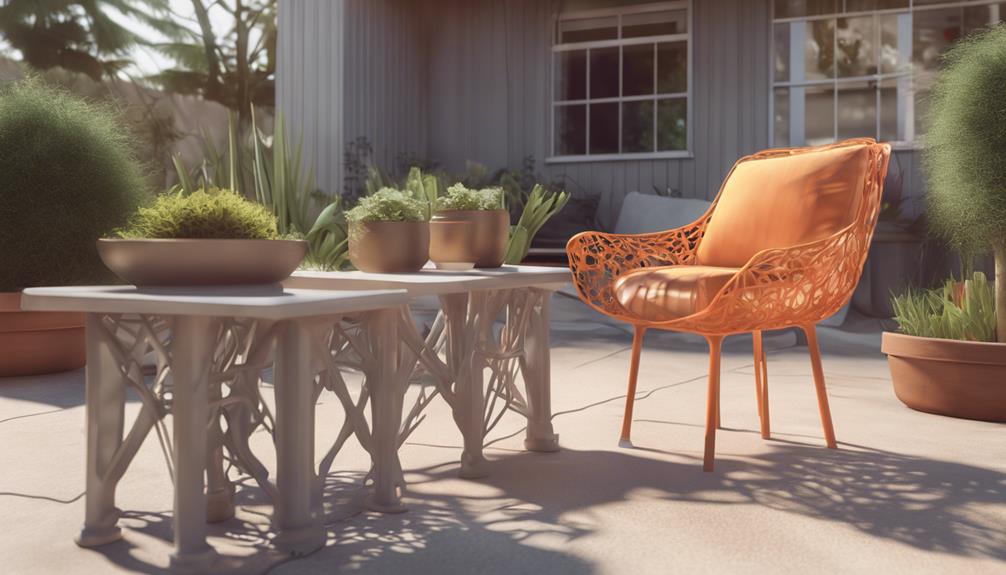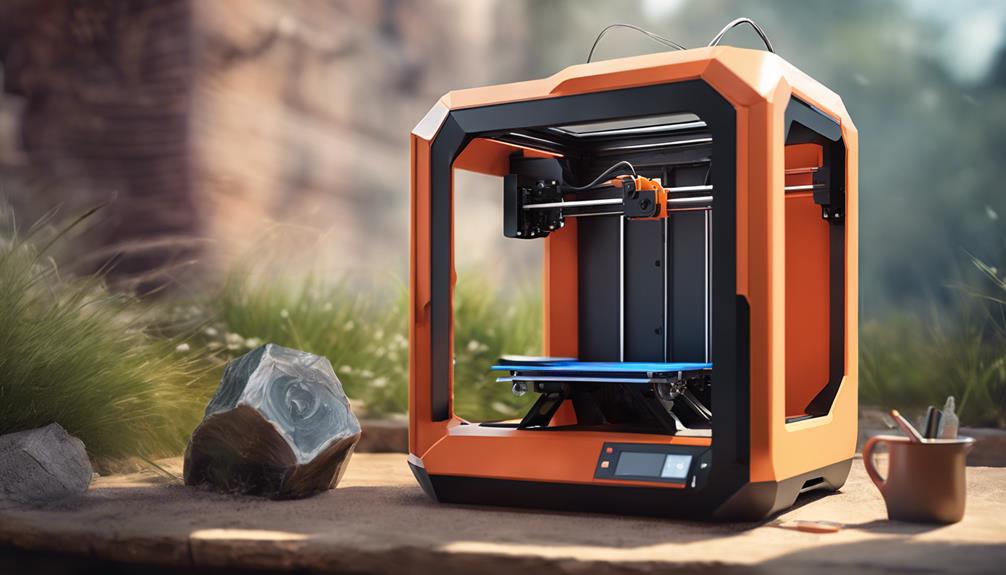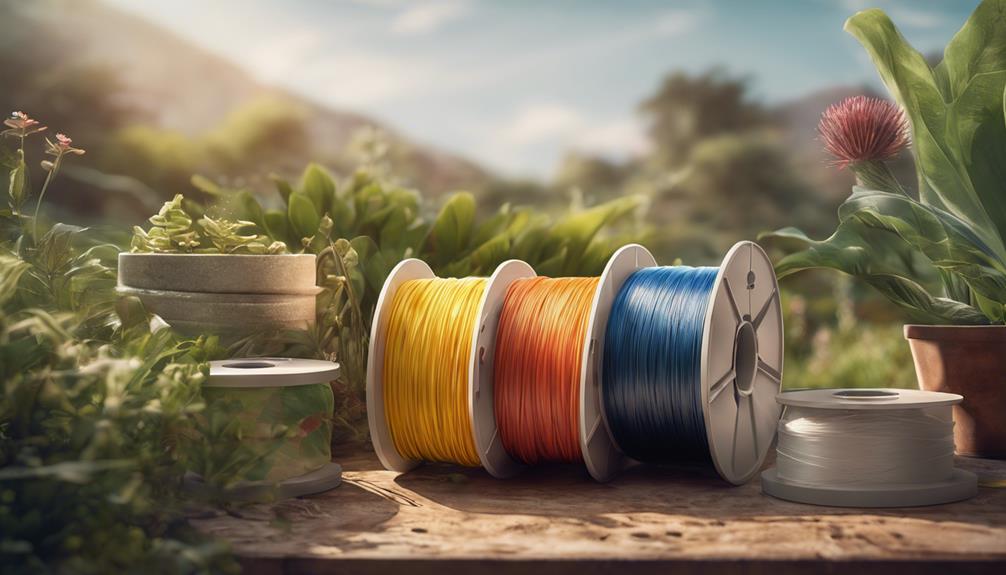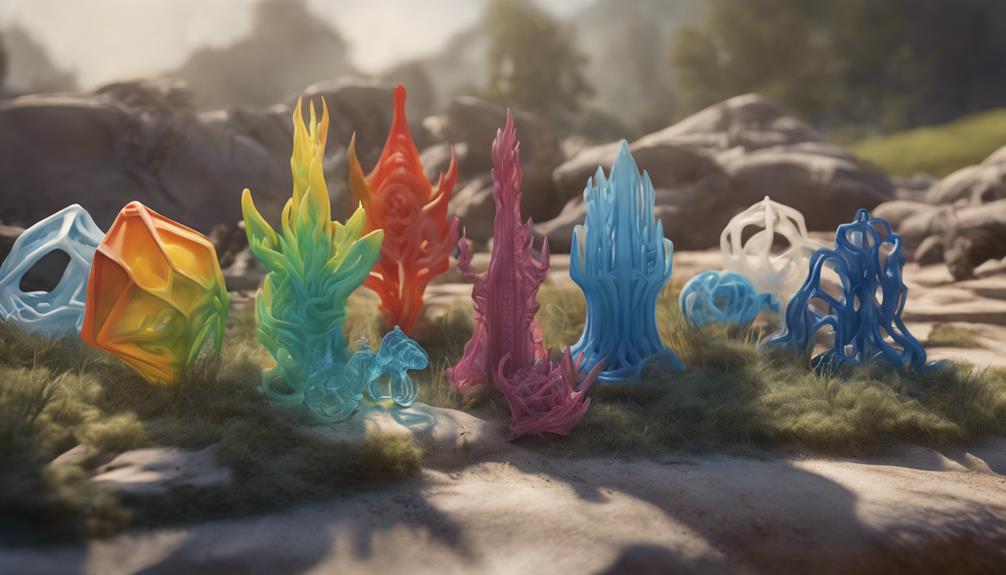Selecting the appropriate filament for outdoor 3D prints is a critical decision that can have a substantial impact on the longevity and resilience of your creations. With exposure to elements like sunlight, temperature changes, and moisture, choosing UV-resistant materials becomes paramount. Understanding the properties of different filaments, such as PETG and ASA, can help guarantee that your outdoor prints withstand the test of time. By delving into the intricacies of filament selection, you can elevate the quality and durability of your outdoor projects, setting the stage for successful printing ventures in challenging environments.
Filament UV Resistance

When selecting filaments for outdoor prints, taking into account UV resistance is crucial to guarantee longevity and durability in various weather conditions. UV light can bleach and break down PLA and ABS filaments over time, affecting their structural integrity.
PETG and ASA filaments are UV resistant and suitable for outdoor use, offering better protection against the harmful effects of sunlight exposure. Weather conditions and usage patterns also play a role in determining the time before degradation becomes visible.
It is crucial to factor in the impact of UV rays on filaments to make sure that outdoor prints maintain their quality and functionality over an extended period, making PETG and ASA ideal choices for outdoor applications.
Temperature Impact on Filaments
Considering the impact of temperature on filament characteristics is essential when selecting materials for outdoor prints. The glass transformation point of a filament determines its resistance to heat. PLA has a low glass transformation point, making it susceptible to becoming brittle in high temperatures. On the other hand, filaments like PETG and ASA have higher glass transformation points, providing better heat resistance.
High temperatures can cause melting or cracking of prints, emphasizing the need to choose filaments with suitable temperature resistance for outdoor applications. Understanding how different filaments react to temperature variations is vital in ensuring the longevity and durability of outdoor prints.
Printing Ease and Filament Compatibility

An essential factor to take into account when selecting filaments for outdoor prints is the importance of checking and confirming compatibility with your 3D printer's specifications. Different filaments require varying temperatures and printing settings, impacting the printing process.
PLA is known for its ease of use due to its low heat requirements, making it suitable for beginners. PETG and ASA, though requiring higher temperatures, are also user-friendly choices. It's vital to verify that your 3D printer can handle the specific filament type you choose to avoid printing issues.
Understanding the compatibility between filaments and your printer will result in successful outdoor prints that are durable and long-lasting.
Hygroscopicity in Thermoplastics
Hygroscopicity in thermoplastics poses a significant challenge in 3D printing due to its propensity to absorb moisture from the surrounding environment. This moisture absorption can lead to various printing problems, such as popping noises and bubbles in the final prints. Nylon filament is particularly prone to saturating with moisture quickly, causing issues during the printing process. To prevent these moisture-related printing problems, it is essential to store hygroscopic filaments in temperature-controlled cabinets. Below is a table illustrating the hygroscopicity levels of common thermoplastics used in 3D printing:
| Thermoplastic | Hygroscopicity Level |
|---|---|
| PLA | Low |
| ABS | Moderate |
| PETG | Low |
| Nylon | High |
Best Filament Types for Outdoors

The impact of moisture absorption on printing quality underscores the importance of selecting appropriate filament types for outdoor applications, with a focus on durability and weather resistance.
- PETG Filament: Known for its UV and water resistance, making it ideal for outdoor use.
- ASA Filament: Exhibits UV resistance and can withstand various weather conditions effectively.
- ABS Filament: Offers sturdiness surpassing PLA, although it lacks UV resistance.
Filament Types to Avoid for Outdoor Use
Nylon, PLA, and HIPS are not recommended for outdoor applications due to their poor UV resistance. UV rays can cause these filaments to lose color and become brittle over time, leading to a shorter lifespan when exposed to sunlight. While HIPS is food-safe, it lacks UV resistance, making it unsuitable for outdoor use where exposure to sunlight is inevitable.
To guarantee the longevity of outdoor prints, it is essential to opt for UV and weather-resistant filaments like PETG and ASA, which can withstand all weather conditions and maintain their integrity over time.
Enhancing Filament Durability

To enhance the durability of filaments for outdoor use, consider applying a clear UV protective varnish as a protective measure against UV exposure and weather-related degradation.
- Enhancing Filament Durability:
- Apply UV protective coatings for long-lasting prints.
- Use weather-resistant filaments for added durability.
- Consider post-processing techniques for improved outdoor longevity.
Frequently Asked Questions
Can Resin 3D Prints Withstand Outdoor Weather Conditions?
Resin 3D prints are not recommended for outdoor use due to their susceptibility to UV exposure, causing hardening, brittleness, and eventual cracking. Opt for UV and weather-resistant filaments like PETG and ASA for outdoor durability.
How Does Moisture Affect the Printing of Nylon Filament?
Moisture affects nylon filament printing by causing absorption, leading to popping noises and bubbles. Hygroscopicity in thermoplastics like nylon accelerates moisture saturation, impacting print quality. Temperature-controlled storage solutions mitigate moisture-related issues, ensuring successful nylon filament printing.
Are There Any Special Considerations for Printing With HIPS Filament?
When printing with HIPS filament, special considerations include its lack of UV resistance, making it unsuitable for outdoor use. HIPS is food-safe but prone to color loss and brittleness when exposed to UV rays.
What Are the Key Differences Between PLA and ABS in Outdoor Settings?
In outdoor settings, PLA and ABS exhibit distinct behaviors. PLA is prone to becoming brittle in high heat, while ABS can change color and become brittle when exposed to sunlight. Opting for UV-resistant filaments like PETG or ASA guarantees longevity.
How Can I Protect My Outdoor Prints From Color Fading and Flaking?
To safeguard outdoor prints from color fading and flaking, choose UV and weather-resistant filaments like PETG or ASA. Apply clear UV protective varnish for additional protection. Opt for materials that withstand UV exposure to guarantee the longevity of your prints.
Conclusion
In summary, opting for UV-resistant filaments like PETG and ASA is essential for ensuring the longevity of outdoor 3D prints. These filaments provide better protection against weather conditions and temperature fluctuations, preventing color fading and material degradation.
For instance, a case study conducted on outdoor signs printed with PETG filament showed no signs of deterioration after one year of exposure to sunlight and rain, highlighting the durability and reliability of these materials for outdoor applications.